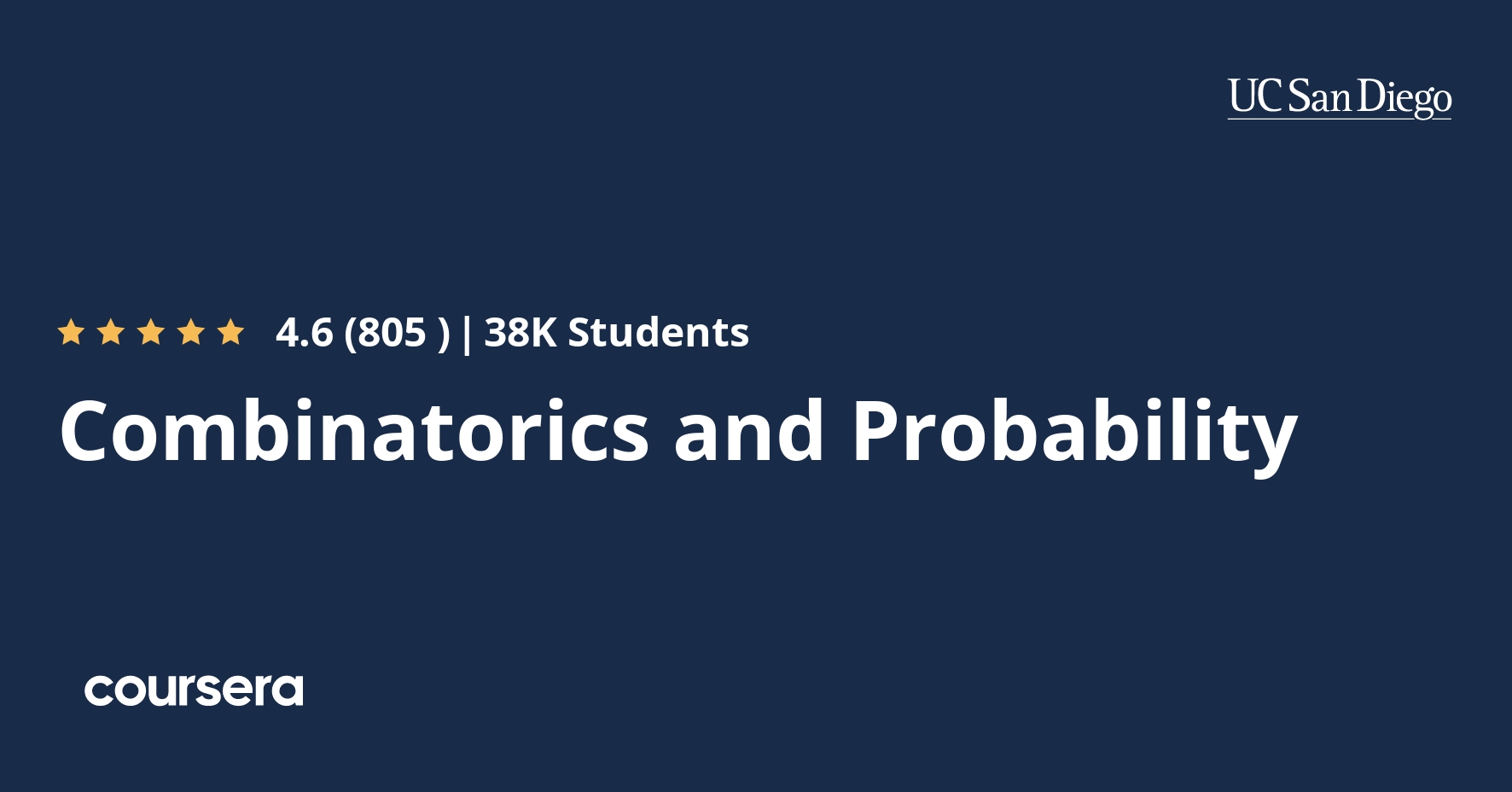Description
Counting is one of the basic mathematically related tasks we encounter on a day to day basis. The main question here is the following. If we need to count something, can we do anything better than just counting all objects one by one? Do we need to create a list of all phone numbers to ensure that there are enough phone numbers for everyone? Is there a way to tell that our algorithm will run in a reasonable time before implementing and actually running it? All these questions are addressed by a mathematical field called Combinatorics.
In this online course we discuss most standard combinatorial settings that can help to answer questions of this type. We will especially concentrate on developing the ability to distinguish these settings in real life and algorithmic problems. This will help the learner to actually implement new knowledge. Apart from that we will discuss recursive technique for counting that is important for algorithmic implementations.
One of the main ‘consumers’ of Combinatorics is Probability Theory. This area is connected with numerous sides of life, on one hand being an important concept in everyday life and on the other hand being an indispensable tool in such modern and important fields as Statistics and Machine Learning. In this course we will concentrate on providing the working knowledge of basics of probability and a good intuition in this area. The practice shows that such an intuition is not easy to develop.
In the end of the course we will create a program that successfully plays a tricky and very counterintuitive dice game.
As prerequisites we assume only basic math (e.g., we expect you to know what is a square or how to add fractions), basic programming in python (functions, loops, recursion), common sense and curiosity. Our intended audience are all people that work or plan to work in IT, starting from motivated high school students.
What you will learn
Basic Counting
Counting is one of the basic mathematically related tasks we encounter on a day to day basis. The main question here is the following: can we count the number of objects without listing all of them? This question arises naturally in various scenarios both in real life and in Computer Science. What is the number of different phone numbers or license plates? What is the number of different combinations one needs to brute force in order to crack a password? Is there a way to tell that an algorithm will run in a reasonable time before implementing and actually running it? All these questions are addressed by a mathematical field called combinatorics. In this module, we consider the basic building blocks of combinatorics. All of them are easy to understand and at the same time are powerful enough to handle various non-trivial questions. To help you to develop an intuition, we consider short Python code snippets for generating the objects to be counted.
Binomial Coefficients
In how many ways one can select a team of five students out of ten students? What is the number of non-negative integers with at most five digits whose digits are decreasing? In how many ways one can get from the bottom left cell to the top right cell of a 5×5 grid, each time going either up or to the right? And why all these three numbers are equal? We’ll figure this out in this module!
Advanced Counting
We have already considered most of the standard settings in Combinatorics that allow us to address many counting problems. However, successful application of this knowledge on practice requires considerable experience in this kind of problems. In this module, we will address the final standard setting in our course, combinations with repetitions, and then we will gain some experience by discussing various problems in Combinatorics.
Probability
The word “probability” is used quite often in the everyday life. However, not always we can speak about probability as some number: for that a mathematical model is needed. What is this mathematical model (probability space)? How to compute probabilities (if the model is given)? How to judge whether the model is adequate? What is conditional probability and Bayes’ theorem? How our plausible reasoning can be interpreted in terms of Bayes’ theorem? In this module we cover these questions using some simple examples of probability spaces and real life sutiations.




